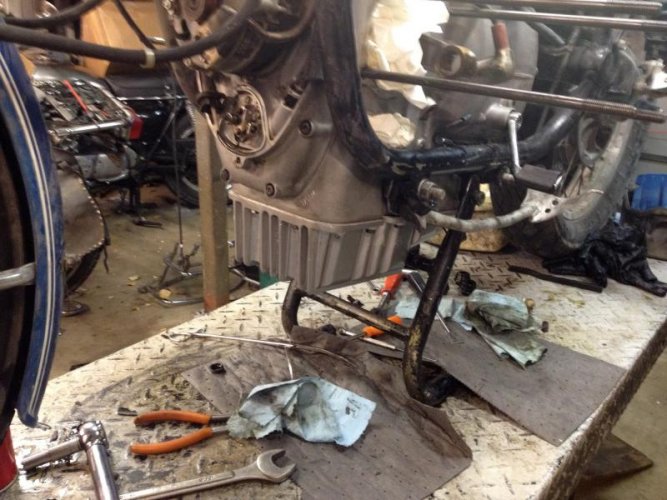Continuing the R90/6 rebuild/upgrade. Installed a Mac deep sump oil pan today and started on installing a Dyna III ignition. The problem I am am having is two fold however. First, the installation instructions concerning installing the "donut" on the stock advance mechanism appears to be too vague. Does anyone know of a better or more comprehensive guide to installing it on an airhead. As far as tech writing goes it really leaves a lot to be desired. It talks of manipulating the "bosses" that hold the weights in place (?). Maybe I need to sleep on it but it appears really unclear. Insight for the slow witted would be appreciated.
Secondly, the stock advance mechanism appears to be about the flimsiest POS I have seen yet. I have replaced the springs once before but lately it has been "coasting" because it won't return from advance. Doesn't anybody make something better that doesn't look like it was made out of compressed rust and soda cans?
I have also included a picture of the new Mac deep sump. First impression? It is very robust and I seriously doubt that a piece of road gravel going 70mph is going to poke a hole in it but it is ugly and looks like it may drag. Anybody got any ideas about a bash plate/engine guard?
Secondly, the stock advance mechanism appears to be about the flimsiest POS I have seen yet. I have replaced the springs once before but lately it has been "coasting" because it won't return from advance. Doesn't anybody make something better that doesn't look like it was made out of compressed rust and soda cans?
I have also included a picture of the new Mac deep sump. First impression? It is very robust and I seriously doubt that a piece of road gravel going 70mph is going to poke a hole in it but it is ugly and looks like it may drag. Anybody got any ideas about a bash plate/engine guard?


